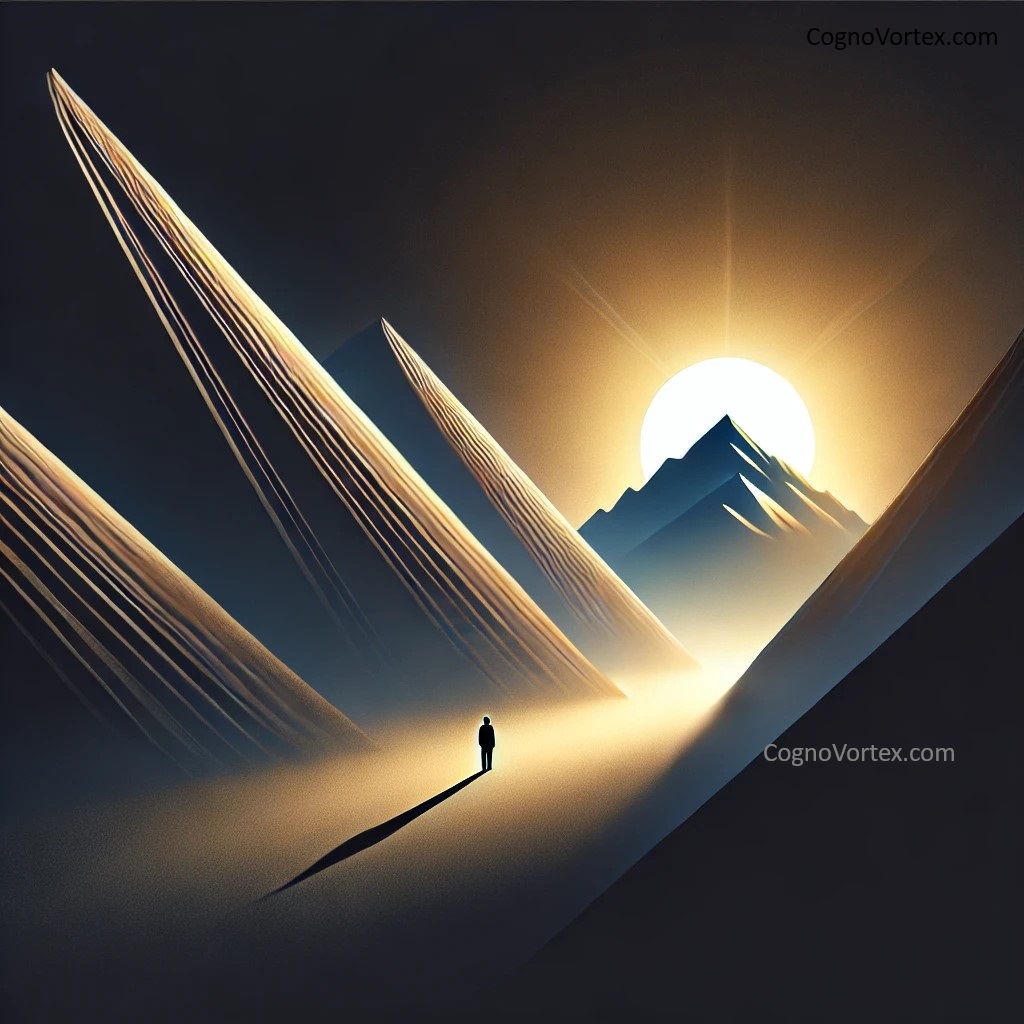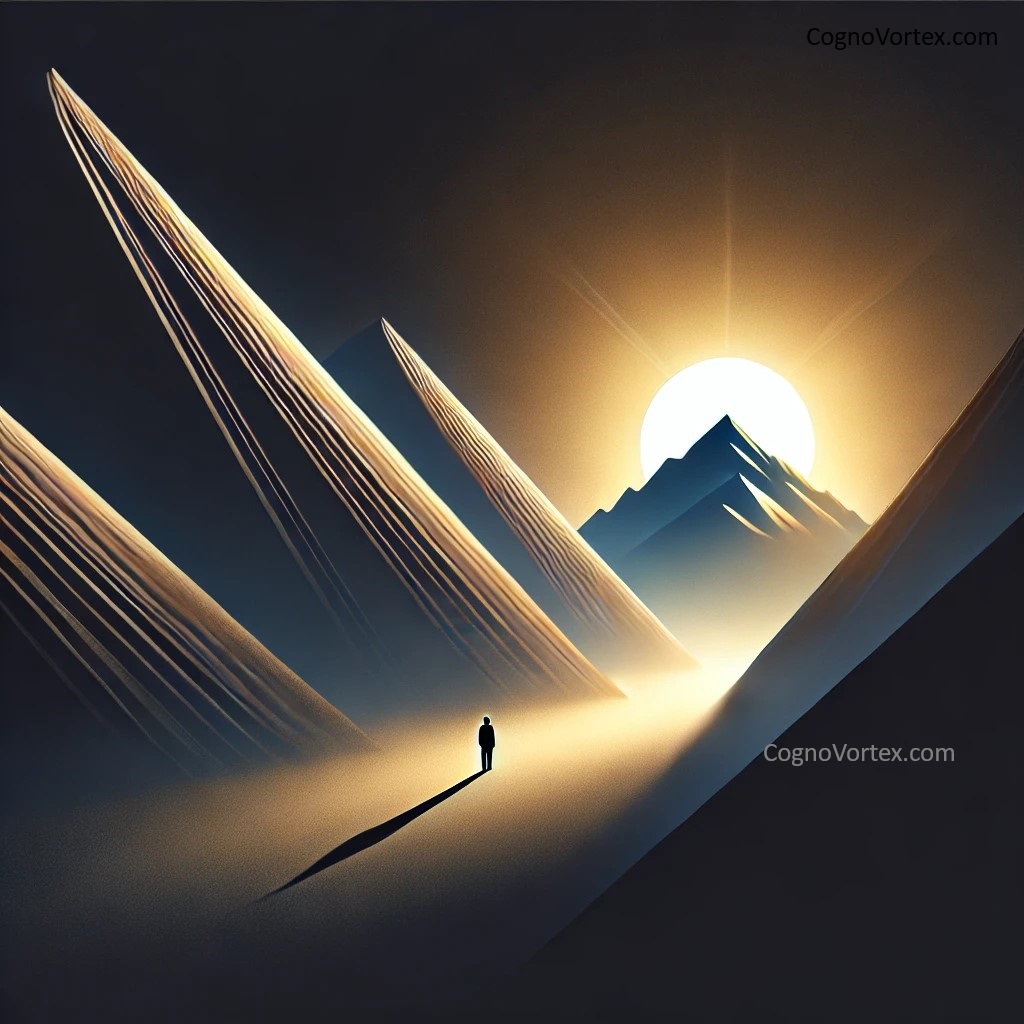For each new crest of happiness, an inevitable valley awaits—a precise counterweight, a measure by which heights are scaled. And from that crest, every future step takes on the memory of that first peak. We trace back through the labyrinth, crossing dark corridors that mark, though we may not admit it, the coordinates of what we thought were the boundaries of our ascent. But in the deepest step away, one glimpses an origin, as if only through suffering could happiness find itself newly—find itself deepened by the absence, only made real by the sheer friction that gives it form.

Just as minerals are pressurized into precious stones, these “steps” through an opposing force calibrate joy with an intensity that could not otherwise exist. The thought alone, that we might surpass happiness by pressing against its own shadow, reveals a strange paradox: what we most try to avoid is the very crucible through which our perception of happiness can refine itself, free of past constructs.
The philosopher Epicurus suggested that happiness, properly known, is neither the endless pursuit of pleasure nor an avoidance of pain, but a harmony that emerges in tension. A wise realization, but it leaves out one critical step: the pain itself becomes a “step,” a mechanism embedded within the happiness it precedes. Where we perceive darkness, there’s the etching of a fuller landscape, one where opposing elements are not dualistic but integrally bound in such a way that each is only truly perceived when the other is in place.
Happiness here is less a “goal” and more an insight into endurance—a truth only understood in proximity to what it is not, perhaps, even on that path only hell could mark.
